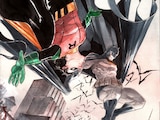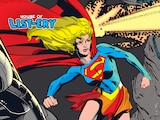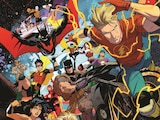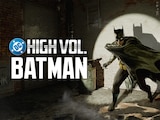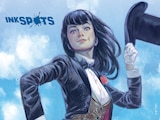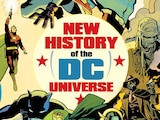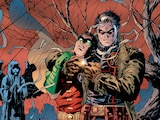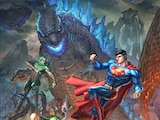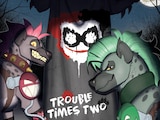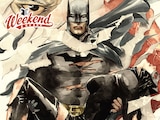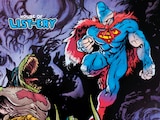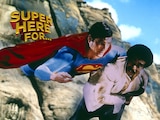In 1993, Milestone Media published four superhero titles with the intention of providing meaningful diversity for a readership that wasn’t properly represented in mainstream comics. The most popular and well-known of these was and continues to be Static, helped in large part to the animated series that aired weekday afternoons in the early 2000s. Static’s popularity only expanded as he appeared on other DC shows like Justice League: Unlimited and Young Justice and saw his comic title relaunched under the DC umbrella in 2011. With Milestone’s recent relaunch, what was once old is new again with the initial four titles getting updated reinventions. Alongside Icon and Rocket: Season One and Hardware: Season One, Milestone’s most famous teen hero has returned started in Static: Season One.
Fans are sure to recognize the blending of mythology in this debut storyline, pulling from both the original Milestone series and the 2000s animated series. While both of these superhero touchstones told the story of teenage electrostatic hero Virgil Hawkins fighting super-powered crime in the city of Dakota after gaining his powers on the night of the Big Bang, the original series was darker than the cartoon and Static’s costumes were entirely different! The comic had him don a skintight bodysuit with a baseball hat and an oversized overcoat, while the show turned the coat silhouette into a jacket and kept his long hair free with a wraparound mask and gold-colored goggles. For Season One, artist Nikolas Draper-Ivey honors both designs by giving Virgil the baseball cap and bodysuit in issue #3 (with the materials to create it a gift from Curtis “Hardware” Metcalf), while in issue #5 during the battle with Hotstreak, Virgil’s suit suffers burns and out comes the classic look of the animated series.

The look of Static isn’t the only place where we see mixed influences. Along with Virgil’s supporting cast—a mainstay of the comics—we are reintroduced to Frieda Goren and Daisy Watkins, as well as Richie Foley. Richie was the animated version of Rick Stone, a friend of Virgil’s who suffered harassment after it came out that he was gay. This version of the character takes from the more widely recognized animated version, but references his orientation in a more direct way than what the creative team of the TV series was allowed to show on air back in the day.
Finally, at the end of issue #5, we see very familiar faces in the form of the Metabreed. Puff, Onyx, Shiv, Talon and D-Struct are all on display as kidnapped Bang Babies that Static frees from the government compound. Of the five, Puff was the one villain from the animated series who originally appeared in the comics (specifically Static #10 with her partner Coil). Shiv and Talon were typically seen with Static’s most dangerous enemy from the show, Ebon, while D-Struct was a troubled student who struggled with being a Bang Baby in episode three.

But while these all occupy the world of Static, how is the story retold? What about Virgil himself?
For starters, writer Vita Ayala takes much more time getting into Virgil’s head, meticulously bringing him to idea of becoming a superhero. For much of Static: Season One, Virgil is very upset at the circumstances of his newfound power and the harm it threatens his friends and family. There’s a constant refrain with him feeling buzzing in the back of his head whenever he feels stressed or angered or pushed to act, even at risk to himself. He’s constantly thinking about lashing out and the consequences that would result if he did so, which is a more thoughtful engagement with a story regarding a super-powered Black teen.
There’s also the context of the Big Bang itself, originally a deadly police intervention at the site of a citywide gang war. The Big Bang is now an event where police attack and gas a crowd of young Black Lives Matter protestors. Feelings of injustice burn in Virgil’s mind as a result, and in between the thrill of discovering his new abilities like flight and repelling bullets, he’s often rendered as seething against the status quo that’s keeping his friends and family underfoot.

However, the biggest change from every previous version of the Static story is that Virgil’s abilities are known or have been witnessed in public by large swaths of people. In the original Milestone series, no one knew of Static’s secret identity save for Frieda and a few other heroes like Hardware. In Static Shock, Virgil told Richie, who became his confidant and eventual partner once he manifested powers of his own. In Static: Season One, Virgil’s battles with Hotstreak (his first and oldest enemy in every incarnation) are fought in public places like the school hallway and right outside his house. Unsurprisingly, a handful of classmates, including a podcaster named Darius, pester him for more information, while his neighborhood collectively keeps things secret from the government for the sake of his parents. His mother and father argue about the best way for Virgil to deal with his powers, from his mother, Jean, urging that he seek medical treatment to his father, Robert, wanting him to learn how to better protect himself. His sister Sharon, often the bane of his existence, just wants him to keep safe and gives him some glucose tablets to keep his always expending energy up. Still, despite the strong presence of Virgil’s family and friends, Season One always keeps us firmly in our hero’s head, experiencing Virgil’s fear, joy, outrage and heroism with every new chapter.
With a terrific blend of the old and familiar with the new, and outstanding artwork by Nikolas Draper-Ivey and ChrisCross, Static: Season One is a rousing success and a worthy return for Milestone’s most famous teen hero. If you’re a fan of the animated series or a longtime fan of the ’90s original, this book is likely to leave you feeling electrified and is only the start of what promises to be a long lasting part of the Static legacy.
Static: Season One by Vita Ayala, Nikolas Draper-Ivey and ChrisCross can now be read in full on DC UNIVERSE INFINITE. It's also now available in bookstores, comic shops, libraries and digital retailers in a collected edition graphic novel.
Donovan Morgan Grant writes about comics, graphic novels and superhero history for DCComics.com. Follow him on Twitter at @donoDMG1.
NOTE: The views and opinions expressed in this feature are solely those of Donovan Morgan Grant and do not necessarily reflect those of DC Entertainment or Warner Bros.




